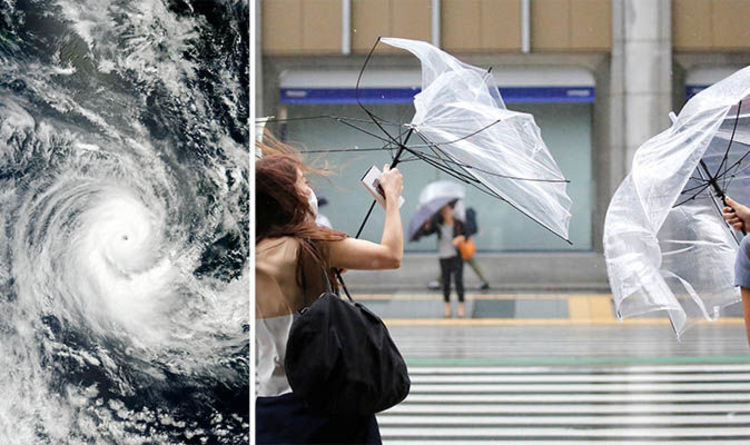One of the strongest typhoons to hit Japan in decades, Typhoon Shanshan, has wreaked havoc across the country, leading to the cancellation of trains and flights, and causing significant damage. As the storm drenches cities in its path, at least six people have been killed, and more than 100 others have been injured.
Typhoon Shanshan made landfall in southwestern Japan on Thursday, initially bringing with it winds of up to 252 km/h (157 mph). Although the storm has since been downgraded to a tropical storm, it still packs winds of 90 km/h (56 mph) and continues to move northeast, leaving a trail of destruction.
The Japan Meteorological Agency issued the highest level-five alert to millions of residents on the southern island of Kyushu as the storm approached. The typhoon’s impact has been severe, with widespread reports of landslides, flooding, and large-scale damage to infrastructure. In many areas, up to 300 mm (12 inches) of rainfall is expected in the next 24 hours.
The storm has caused power outages affecting thousands of households, and residents have been urged to remain vigilant as the risk of further landslides and flooding remains high. Buildings across the affected areas have been severely damaged by flying debris, with trees uprooted, cars overturned, and many structures partially or entirely submerged in floodwaters.
The Japan Meteorological Agency continues to warn of heavy rain in regions such as Gifu and Mie prefectures, stressing the ongoing threat of landslides, flooding, and overflowing rivers.
“This is the first time I’ve seen a typhoon sweeping across all of Japan,” a Tokyo resident told Reuters. “Typhoons are supposed to go north from Okinawa, so I didn’t expect it to be like this. I’m very surprised.”
In response to the storm, All Nippon Airways and Japan Airlines have canceled dozens of domestic flights. Bullet train services, including those between Tokyo and Osaka, have also been disrupted, with Shinkansen trains in the central city of Nagoya among those suspended. Authorities have warned that further suspensions are possible.
A special typhoon warning was issued for Shanshan, a rare measure typically reserved for extraordinarily powerful storms. This follows a similar warning issued in September 2022 for Typhoon Nanmadol, which targeted the Kyushu region.
Recent studies suggest that climate change is contributing to the increasing intensity and rapid formation of typhoons near coastlines. These storms are now lasting longer over land, exacerbating their destructive potential.
As Japan continues to grapple with the aftermath of Typhoon Shanshan, authorities remain on high alert, urging residents to stay safe and prepared for further challenges in the days ahead.



